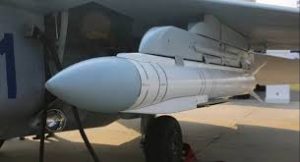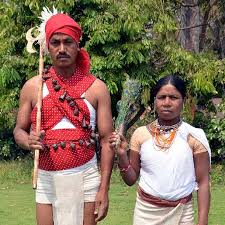Today’s Current Affairs: 4th September 2024 for UPSC IAS exams, State PSC exams, SSC CGL, State SSC, RRB, Railways, Banking Exam & IBPS, etc
Table of Contents
Anti-Rape ‘Aparajita’ Bill : West Bengal

The West Bengal Assembly has unanimously passed the ‘Aparajita Woman and Child Bill (West Bengal Criminal Laws and Amendment) 2024’, marking a significant development in the state’s legal framework against sexual crimes. This bill introduces the death penalty for individuals convicted of rape if their actions result in the victim’s death or leave her in her in a vegetative state.
- With this move, West Bengal becomes the first state to amend central laws dealing with rape, gang-rape, and sexual crimes against children.
Key Provisions of the Bill:
- The ‘Aparajita’ bill is named in tribute to a 31-year-old trainee doctor who was raped and murdered at RG Kar Medical Centre and Hospital last month.
- The bill’s key provisions include:
- Death Penalty: Imposed for rape if the victim dies or suffers severe brain damage.
- Life Sentence: Without parole for those convicted of rape.
- Aparajita Task Force: To ensure punishment within 21 days of the preliminary report.
- Enhanced Safety Measures: Installation of CCTV cameras and increased security on routes used by female healthcare workers, with an allocation of Rs 120 crores.
- ‘Ratri Saathi’ Provision: Extends the duty hours for female workers, ensuring their safety during night shifts.
Project NAMAN:

The Indian Army launched Project NAMAN to support Defence Pensioners, Veterans, and their families, centred around the SPARSH digital pension system.
- The project aims to streamline pension processes and provide essential services through Common Service Centres (CSCs) across India.
- These centres, supported by HDFC Bank and managed by veterans or their families, offer SPARSH-enabled pension services, e-Governance, and banking solutions, reflecting the Army’s commitment to veteran welfare and community empowerment.
‘Navratna’ Status To The State-Owned Companies:

SJVN, NHPC, and RailTel Corporation of India saw their shares rise by up to 5.2% following the Indian government’s decision to grant them ‘Navratna’ status.
- This designation, which enhances their financial and operational autonomy, was also awarded to Solar Energy Corporation of India (SECI), bringing the total number of Navratna Central Public Sector Enterprises (CPSEs) to 25.
- The status allows these companies greater decision-making freedom, potentially boosting their market performance and enabling faster growth.
Digital Agriculture Mission : In News

The Union Cabinet Committee chaired by the Prime Minister of India approved the Digital Agriculture Mission with an outlay of Rs. 2817 Crore, including the central share of Rs. 1940 Crore.
- Digital Agriculture Mission is conceived as an umbrella scheme to support digital agriculture initiatives, such as creating Digital Public Infrastructure, implementing the Digital General Crop Estimation Survey (DGCES), and taking up other IT initiatives by the Central Government, State Governments, and Academic and Research Institutions.
- Three major components of DPI are envisaged under the Digital Agriculture Mission: AgriStack, Krishi Decision Support System (DSS) and Soil Profile Maps.
- Each of these DPI components will provide solutions that will allow farmers to access and avail of various services.
- Farmers’ Registry, Geo-referenced Village Maps and Crop Sown Registry, all of which will be created and maintained by state/ UT governments.
- It will be given a digital identity (‘Farmer ID’) similar to Aadhaar, which will be linked dynamically to records of land, ownership of livestock, crops sown, demographic details, family details, schemes and benefits availed, etc.
- Pilot projects for the creation of Farmer IDs have been carried out in six districts — Farrukhabad (Uttar Pradesh), Gandhinagar (Gujarat), Beed (Maharashtra), Yamuna Nagar (Haryana), Fatehgarh Sahib (Punjab), and Virudhunagar (Tamil Nadu).
- It will provide details of crops planted by farmers. The information will be recorded through Digital Crop Surveys — mobile-based ground surveys — in each crop season.
- It will link geographic information on land records with their physical locations.
- It will create a comprehensive geospatial system to unify remote sensing-based information on crops, soil, weather and water resources, etc.
- This information will support crop map generation for identifying crop sown patterns, droughts/flood monitoring and technology/model-based yield assessment for settling crop insurance claims by farmers.
- Under the Mission, detailed Soil Profile Maps (on a 1:10,000 scale) of about 142 million hectares of agricultural land are envisaged to be prepared.
- A detailed soil profile inventory of about 29 million ha has already been completed
Paris Zinc Roofers:

The French Culture Ministry nominated the zinc roofing profession in Paris for UNESCO’s Intangible Cultural Heritage (ICH) list, highlighting the craftsmanship.
- Zinc roofs have been integral to Paris’s skyline for nearly 200 years, with 21.4 million square metres of zinc-covered roofs.
- While zinc roofs contribute to Paris’s iconic look, they face criticism for overheating buildings due to poor insulation; zinc roofs exacerbate heat absorption, leading to higher indoor temperatures.
- The UNESCO ICH list includes knowledge and skills that are passed down through generations, such as: Oral traditions, Performing arts, Social practices, Rituals, Festive events, Traditional crafts, and Contemporary rural and urban practices.
- India has a total of 15 elements inscribed on the UNESCO ICH list.
Digital Bus Initiative:

The Digital Bus initiative has so far impacted over three lakh beneficiaries, spread across several states across India.
- Digital Bus initiative is a joint venture between the National Digital India Mission and the NIIT Foundation.
- It was started in 2017, aims to take technology to remote areas and also foster innovation and offer new opportunities and ensure that every community is able to thrive in the digital age.
- Objective is Reducing the Digital divide for those living in remote areas and Providing Linkages to Government programs and initiatives
- These are solar-powered, 5G-enabled and fully furnished classrooms with computers, Internet and camera/video capabilities, with preinstalled e-courses, all available free of cost.
- These courses focus on fundamental functions like using e-mail, the Internet and applications.
- It offers a career programme to help the beneficiary look for a job in the nearest city of town.
Grom-E1 Missile:

Russian troops recently hit Kharkiv, Ukraine, with a Grom-E1 hybrid missile
- Grom-E1 Missile is a sophisticated weapon created from the Soviet-era Kh-38 “air-to-surface” missile.
- It was developed by Russia and officially unveiled for the first time in 2018.
- It combines the features of both a missile and an aerial bomb.
- It features a high-explosive modular warhead equipped with a contact detonator.
- In addition to its standard configuration, there is a variant with a thermobaric design capable of detonating at high altitudes.
- The bomb itself weighs 594 kg (1,310 pounds), with a 315 kg (694 pound) warhead.
- The effectiveness of the Grom-E1 depends on the altitude and speed of the aircraft that launches it.
- For instance, its maximum range of 120 km (75 miles) can be achieved when dropped from an altitude of 12 km (7.5 miles) at a speed of 1,600 km per hour (994 mph). At an altitude of 5 km, the range decreases to approximately 35 km.
- This weapon can be deployed by Russian aircraft such as the MiG-35, Su-34, Su-35, Su-57, and certain helicopters.
Saora Tribe:

With Saora tribals of Gajapati district getting habitat rights over their ancestral lands recently, Odisha has become the only state to provide such rights to the highest number of particularly vulnerable tribal groups (PVTGs).
- Saora is one of the ancient tribes of Odisha, which is also mentioned in the epics Ramayana and Mahabharata.
- They are called by various terms such as Savaras, Sabaras, Saura, Sora, etc.
- Though Odisha is the mainland for the tribe, a small number of people are also found in the states of Andhra Pradesh, Jharkhand, Madhya Pradesh and Assam.
- They have their own native language called Sora, which is a Munda language, and they are one of the very few tribes of India that have a script for the language, Sorang Sompeng.
- The Saoras show their racial affinity to the Proto Australoid physical characters, which are dominant among the aborigines of Central and Southern India.
- Saoras follow an ingrained and intricate religion, having faith in and worshipping a number of gods and spirits, who they believe are the supreme controllers of their regular lives.
- They have unique art practices, religious customs, as well as a dying tattooing tradition called ‘Tantangbo’.
- The Saoras can be divided broadly into two economic classes:
- The Saoras of the plains (Sudha Saora) depending on their wet cultivation or wage earning and selling firewood.
- The Hill Saoras (Lanjia Saora) practice shifting and terraced cultivation on the hill slopes.
- Saora villages do not conform to any particular type of settlement pattern.
- Houses are scattered and megaliths erected to commemorate dead kin are located close by.
Colombo Security Conclave : In News

Member states of the Colombo Security Conclave (CSC) recently signed the Charter and the MoU for the establishment of the CSC Secretariat in Colombo.
- Colombo Security Conclave (CSC) is a regional security grouping comprising India, Bangladesh, Sri Lanka, Maldives, and Mauritius.
- The CSC’s core objective is to promote regional security by addressing transnational threats and challenges of common concern to the Member States.
- The CSC, initially known as the Trilateral for Maritime Security Cooperation,evolved out of trilateral meetings between National Security Advisors (NSAs) and Deputy NSAs from India, Maldives, and Sri Lanka, starting in 2011.
- It came to a standstill after 2014 due to rising tensions between India and the Maldives.
- Since its revival and re-branding as the CSC in 2020, Mauritius and more recently, Bangladesh were added as members of the grouping.
- Current members of CSC include India, Bangladesh, Maldives, Mauritius and Sri Lanka, while the Seychelles is an observer nation.
- CSC brings together NSAs and Deputy NSAs of the member countries.
India Semiconductor Mission:

The Union Cabinet recently gave the green light to Kaynes Semicon Pvt Ltd to establish a new semiconductor unit in Sanand, Gujarat, which is the fifth semiconductor unit to be approved under the India Semiconductor Mission (ISM).
- ISM is a specialized and independent Business Division within the Digital India Corporation.
- It aims to build a vibrant semiconductor and display ecosystem to enable India’s emergence as a global hub for electronics manufacturing and design.
- ISM has all the administrative and financial powers and is tasked with the responsibility of catalysing the India Semiconductor ecosystem in manufacturing, packaging, and design.
- ISM has an advisory board consisting of some of the leading global experts in the field of semiconductors.
- ISM has been working as a nodal agency for the schemes approved under the Semicon India Programme.
Law Commission of India : In News

The President of India recently sanctioned the formation of the 23rd Law Commission for a three-year term.
- Law Commission of India is a non-statutory bodyand is constituted by a notification of the Government of India, Ministry of Law & Justice.
- It is constituted with definite terms of reference to carry out research in the field of law, and the Commission makes recommendations to the Government (in the form of Reports) as per its terms of reference.
- It functions to the Ministry of Law and Justice as an advisory body.
- A law commission is created when the Union government passes a resolution for the formation a new commission after the expiry of the last one.
- After the resolution is passed, and the President gives assent to it, the government has the liberty to choose the chairperson for the new commission.
Thanjavur Veena : GI Tag

Thanjavur Veena is the first musical instrument in the country to get the Geographical Indication (GI) tag.
- The Thanjavur veena is an Indian instrument and has an interesting construction.
- They are of two types viz. the “Ekantha Veena” and “Sada Veena’.
- “Ekantha Veena” is carved from a single block of wood, while “Sada Veena” has joints and is carved in three sections namely resonator, neck and head.
- The veena has 24 fixed frets (Mettu) so that all ragas can be played.
- It is made of fresh bark from a Jack Fruit Tree. The tree bark is forced to undergo several rounds of testing before being finalized for usage.
- The work involves making the resonator ( kudam), the neck ( dandi) and a tuning box — the three integral parts of a veena.
- It takes up to 15-20 days, to get the finished product. The wood gets cut, intricately carved, shaped, and assembled.
World Bank Ups India’s Growth Forecast to 7% for FY25:
The World Bank has revised its growth forecast for the Indian economy, increasing it to 7% for the fiscal year 2024-25, up from the earlier estimate of 6.6%. This adjustment comes despite a slowdown to 6.7% in the April-June quarter, attributed to reduced government spending during national elections
Thulasimathi Murugesan and Manisha Ramadass Shine at Paris 2024 Paralympics:
Indian para-badminton players Thulasimathi Murugesan and Manisha Ramadass clinched silver and bronze medals, respectively, in the women’s singles SU5 class at the Paris 2024 Paralympics. Their outstanding performances not only showcased their exceptional talent but also marked a historic moment for Indian badminton.
RIL Becomes India’s First Company to Surpass Rs 10 Lakh Crore in Annual Revenue:
Reliance Industries Limited (RIL) has made history as the first Indian company to exceed ₹10 lakh crore in annual revenue. This milestone was revealed during RIL’s Annual General Meeting (AGM) by Chairman Mukesh Ambani.
Google DeepMind’s Morni AI to Cover 125 Indic Languages:
Google DeepMind’s India unit is spearheading an ambitious AI project named Morni (Multimodal Representation for India), aiming to encompass 125 Indic languages and dialects. Speaking at the Global Fintech Fest, Manish Gupta, Director of Google DeepMind India, highlighted that among these languages, 73 had no existing digital corpus.
Uttar Pradesh to Invest Rs 33,500 Crore in IT and ITeS Hubs:
The Uttar Pradesh government is set to make a significant investment of approximately Rs 33,500 crore (around $4 billion) to spur growth in the Information Technology (IT) and IT-enabled Services (ITeS) sectors over the next five years.
Suhas Yathiraj Secures Silver Medal in Badminton at Paris 2024 Paralympics:
Indian para-badminton star Suhas Lalinakere Yathiraj added yet another accolade to his remarkable career by winning the silver medal in the men’s singles SL4 category at the Paris 2024 Paralympics.
Sheetal Devi and Rakesh Kumar Secure Bronze in Mixed Team Compound Archery at Paralympics 2024:
Indian duo of Sheetal Devi and Rakesh Kumar claimed the bronze medal in the mixed team compound archery competition at the Paralympics 2024 on September 2nd. Their victory was secured with a nail-biting 156-155 win over Italy’s Eleonora Sarti and Matteo Bonacina, marking only the second time that India has won a medal in archery
Philips Appoints Bharath Sesha as New Managing Director for India:
Dutch multinational conglomerate Philips has appointed Bharath Sesha as the Managing Director for India, effective September 1. Sesha will lead the company’s growth strategy in India, focusing on enhancing customer satisfaction and driving operational excellence, particularly in the healthcare sector.
Union Cabinet Approves Establishment of Semiconductor Unit in Sanand, Gujarat:
In a historic move that underscores India’s commitment to becoming a global hub for semiconductor manufacturing, the Union Cabinet, chaired by Prime Minister Narendra Modi, approved the proposal of Kaynes Semicon Pvt Ltd to establish a semiconductor manufacturing unit in Sanand, Gujarat.




